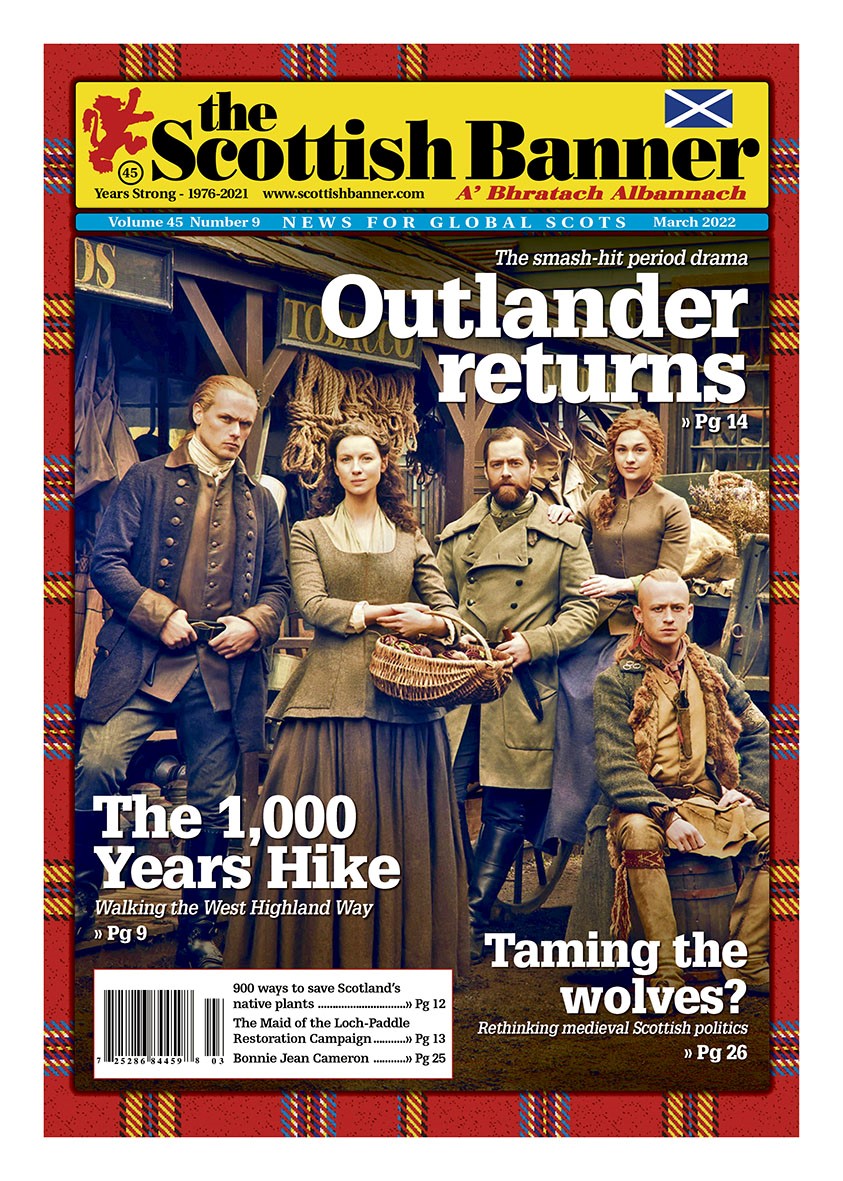March – 2022 (Vol. 45, Number 09)
The Banner Says…
‘Hopping’ to stay on the Bonnie, Bonnie Banks
Just outside Glasgow sits one of Scotland’s most beautiful attractions, and the largest lake by surface area in the UK (and the second largest lake by volume after Loch Ness), Loch Lomond.
We of course all know the song about ‘The bonnie, bonnie banks of Loch Lomond’ and it boasts 22 islands and 27 islets (very small islands).
Inchconnachan
I have been fortunate to travel to Loch Lomond a few times and take in the amazing natural beauty and history of the area. On my last visit a few years ago I was on a boat and the crew were telling us about some very unique and special local residents you may not expect to find on the loch, or in Scotland for that matter. The uninhabited island of Inchconnachan, has been home to a clan of red-necked wallabies. Associated with the vast Australian landscape a Wallaby is a marsupial or pouched animal that is a member of the kangaroo family.
The name Inchconnachan comes from the Gaelic form of Innis Chonachain, meaning ‘The Colquhoun’s Island’. Interestingly most of Loch Lomond’s islands include ‘Inch’, which originates from the Gaelic word ‘innis’ for island. The 42-hectare island was owned by the Colquhoun family for more than seven centuries.
But just how did wallabies end up on a Scottish island? Fiona Bryde Colquhoun, the Countess of Arran, brought in the wallabies from her Hertfordshire home at the end of the Second World War. Lady Arran was passionate about animals, nature and Scotland and the couple she brought to the island soon became a colony of about 60 who survived on the island’s dense oak, holly, and birch. Some also may be surprised to hear that the Countess of Arran later in life was the first person to average 100 mph in an offshore boat and became known as the ‘fastest granny on water’.
Wallaby Island
In 2020 Inchconnachan, or Wallaby Island as it is also known, went up for sale and must have been considered one of Scotland’s most unique property sales at the time. It sold for over £1.5 million, and the new owners now want to turn the island into an eco-holiday let island and clear out the wallaby population, who have now resided on the island for over 80 years. The new owners are keen for the animals to be relocated, however an online petition (www.change.org/p/scottish-government-save-the-wallabies-of-loch-lomond) to protects both the wallabies and their habitat has begun in protest, at time of press the target of 75,000 signatures was about to be reached.
People from around Scotland and the world have voiced their concerns. Whilst these animals might be more expected in the Australian outback, they have adapted to Scottish life and formed a multi-generational base and become part of the Scottish ecosystem and have economic benefits as they draw tourists to the region to see the unique animal in the wild.
Some wildlife experts fear the stress of relocation could be fatal to some of the wallabies and that they now play a part in the ecosystem. While others insist, they are not native to Scotland and should be culled. There is suggestion they pose a threat to native wildlife such as grouse and capercaillie and the island should be left to them and other native species like ospreys, otters, deer, and birds. The long-term goal for the island is to have any non-native species population be zero (or as close as possible) and this includes all species of both flora and fauna. The new owners are thankfully not supportive of culling the animals.
In this issue
Across the world this month fans of the Outlander television series can breathe a sigh of relief as the hit period drama returns. Outlander has been an incredible success for Scotland and generated much interest in Scottish history, tourism and helped create many jobs in the Scottish film and production industry. I remember being at Highland Games back in the 1990’s and seeing the author Diana Gabaldon at the same events promoting her books which she could never have known would translate to a global television phenomenon, just as her books have.
This month on March 8th is International Women’s Day and we likely could have filled up a few pages with some of the amazing Scots women who have blazed a trail for those who came behind them. We do however look at Bonnie Jean Cameron, she broke just a few glass ceilings as she took men to battle and was simply ‘too much woman’ for some. This year is the 250th anniversary of her death and we are so glad to highlight this dynamic Scot.
One of Loch Lomond’s most unique residents
Could one of Lady Arran Colquhoun legacies, the 80-year residency of wallabies, soon be over on Loch Lomond? Certainly one of Loch Lomond’s most unique residents could go elsewhere, and there are in fact wallabies living across the UK, but Clan Wallaby have made home on Inchconnachan. Their future lies in the hands of local government and the new owners, and it may no longer include those bonnie, bonnie banks.
What do you think should happen to the wallabies of Inchconnachan? Share your story with us! Do you have you any comments from the content in this month’s edition? Share your story with us by email, post, social media or at: www.scottishbanner.com/contact-us
#ScottishBanner, #TheBanner
Covid-19 is having a major impact on many of our regular advertisers, with events being cancelled and businesses suffering. The Scottish Banner is more reliant than ever on our readers helping us to provide you with our unique content by buying a copy of our publication, regardless if by print or digital subscription or at a retail outlet.
We appreciate your support and hope you enjoy this edition.


My last name is Conachan, can I lay claim to the Island? I’ll let the wallabies stay.